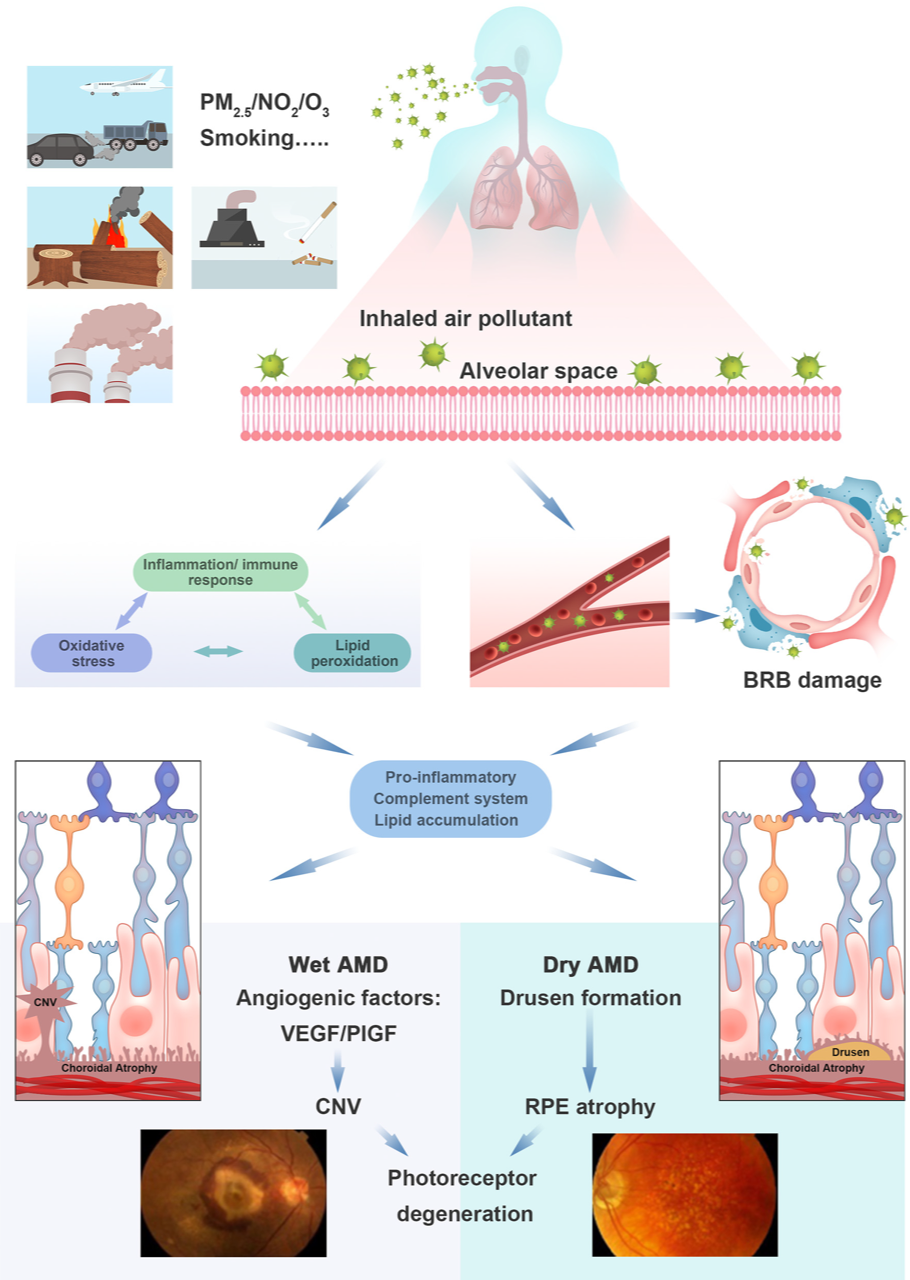 |
| As air pollutants exposure enter the blood circulation and cross the blood-retinal barrier, they can cause the pathological changes of AMD. Exposure can also cause local inflammatory responses and oxidative stress responses, which in turn cause systemic responses that act on the macula. Click image to enlarge. |
The impacts of air pollution on eye disease development have become the new area of focus. Disordered air exposure combined with inadequate health management has caused problem with dry eye, glaucoma and retinopathy, while its specific role in the occurrence of AMD is still not well understood. A recent review of evidence on the association between air pollutants exposure and AMD has revealed that exposure could accelerate or worsen the morbidity and prevalence of the disease.
Based on the results of the studies, the researchers proposed a plausible pathogenic mechanism of air pollutants exposure and AMD that involves oxidative stress, inflammation/immune response and lipid peroxidation.
“Air pollutants exposure can penetrate the alveolar wall, enter the blood circulation, cross the blood-retinal barrier, causing the pathological changes of AMD,” the authors wrote in their paper. “On the other hand, air pollutants exposure can also cause local inflammatory responses and oxidative stress responses, which in turn cause systemic responses that act on the macula.”
When individuals are exposed to outdoor or indoor air pollution, they could experience increased pro-inflammatory reaction, complement system dysregulation and lipid accumulation. For dry AMD, sustained damage to the retinal pigment epithelium leads to its as well as choriocapillaris degeneration. For wet AMD, the blood-retinal barrier’s breakdown leads to immune cell trafficking into the retina, which drives angiogenic factors-dependent neovascularization. Both forms ultimately result in photoreceptor damage and visual impairment.
The researchers also noted that cigarette smoking-related AMD may be also associated with the dysregulation of the choroidal functions and structural changes.
Notably, the team found that most studies did not assess air pollutants exposure at an individual level. Therefore, it was difficult to account for specific residential, occupational or household exposure to air pollutants at levels that could deviate from that in the local area. Also, they noted that further long-term prospective studies should involve well-defined diagnostic criteria for AMD and explain causality qualitatively and quantitatively
“Knowledge on air pollutants exposure with AMD is limited and mostly based on observational big-data studies, and containing insufficient experimental evidence with, at best, inconclusive results,” the researchers concluded. “More attention should be given to understanding the impact of ambient air pollution on AMD and improving the air quality is likely to be of increasing importance in the future.”
Liu L, Li C, Yu H, Yang X. A critical review on air pollutant exposure and age-related macular degeneration. Sci Total Environ. June 14, 2022. [Epub ahead of print]. |

